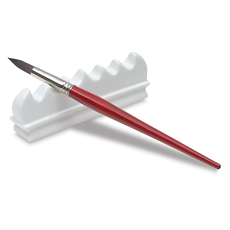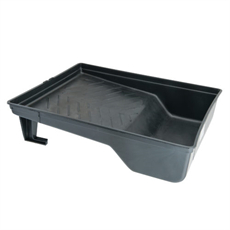Painting with precision and fine detail brushes requires patience, practice, and a steady hand. Whether you’re working on intricate details in a small artwork or adding fine details to a larger painting, here are some tips to help you achieve precision with fine detail brushes:
- Choose the Right Brush:
- Select a detail brush with a fine point and a sharp tip. Detail brushes come in various shapes, such as liners, spotter brushes, and round brushes. The choice depends on the specific details you want to paint.
- Use High-Quality Brushes:
- Invest in high-quality detail brushes that have well-shaped bristles and maintain their shape over time. Quality brushes hold paint better and allow for finer control.
- Brush Control:
- Practice brush control by holding the brush close to the bristles. This provides better precision and control over your strokes.
- Thin Your Paint:
- Thin your paint with an appropriate medium or solvent to achieve a consistency that flows smoothly and doesn’t clog the brush. Too thick paint can make it challenging to paint fine details.
- Work in Good Lighting:
- Proper lighting is crucial for seeing the details clearly. Use natural light or bright, adjustable artificial lighting to illuminate your workspace.
- Plan Your Approach:
- Plan your painting approach and visualize the details you want to add before you begin. This can help you work more efficiently and with greater precision.
- Start with an Outline:
- Begin by lightly sketching or outlining the details you intend to paint. This serves as a guide and prevents mistakes.
- Control Your Breathing:
- Steady your hand by controlling your breathing. Take deep breaths and exhale slowly while painting to reduce hand tremors.
- Use a Palette:
- Use a palette to mix small amounts of paint at a time. This allows you to maintain consistent colors and values as you work on details.
- Test Strokes:
- Before applying the brush to your painting, practice your strokes on a separate surface or scrap paper to get a feel for the brush and paint consistency.
- Hold Your Breath:
- When you need to make particularly precise strokes, hold your breath briefly while applying the brush to the canvas to minimize any unintended movement.
- Be Patient:
- Detail work can be time-consuming. Take your time, and don’t rush. Precision painting often requires multiple layers and adjustments.
- Use a Fine Point for Highlights:
- For small highlights or accents, use the very tip of your detail brush. This allows you to apply the smallest amount of paint with precision.
- Clean Your Brush:
- Clean your brush regularly during the painting process to prevent the buildup of paint and maintain a sharp tip.
- Rest Your Hand:
- Take short breaks to rest your hand and reduce fatigue. Stretch your fingers and wrist to prevent cramping.
Remember that precision in painting with fine detail brushes comes with practice and experience. Be patient with yourself, and over time, your ability to paint intricate details will improve.














